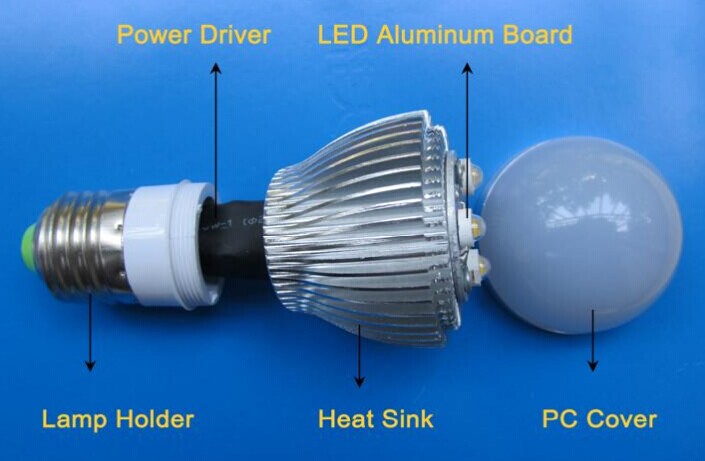The consumers are accustomed to measuring brightness in terms of wattage, but that’s fading away. In the last few months, lighting manufacturers have produced LED lamps that give off about 1,600 lumens, or the same as a 100-watt incandescent. Because these are new, 100-watt equivalent bulbs will be the most expensive, while the less-bright lamps have already gone down in price considerably over the past three years.
The next question is color, either a cooler white light at 3,000 Kelvin or a warmer, yellow light at 2,700 Kelvin, which is more like an incandescent. One feature of LEDs is that the light can be adjusted to the full spectrum of colors, which opens up some new possibilities. Philips is selling a lighting kit of four bulbs, controllable through a smart phone, where people can choose the color of light from a full palette. (See, Apple Sells Philips’ Color-Shifting Wireless Lights.) I became introduced to cooler, white light when I installed my first LED lamps. I found I prefer the white light during the day, so I use those in my office, rather than the warmer-color bulbs.

Less well known is color quality. In my experience, one is quickly spoiled by higher-quality light. I recently received a Switch LED, which has a color rendering index (CRI), a measure of light quality, of over 80. It’s perfectly acceptable. But I decided I’d rather have the Philips L-Prize bulb, which has a CRI of 93, in a spot by the front door where the light is on more often. Familiarity counts for a lot, too. The new Cree bulb has a CRI of over 80 but its filament tower, where a series of LEDs give off light at the center of the bulb, gives off an even light that resembles the glow of an incandescent filament
Bulb Characteristics
The dimensions of LED bulbs are similar, but not quite the same as a standard incandescent bulb. The average diameter and length of these LED lights is similar to that of incandescent bulbs but varies depending on the model. LED lights can also be heavier than incandescent bulbs, so you'll want to be sure that your
light fixture can support the extra weight.
You can't enclose most LED light bulbs in a light fixture because heat decreases the life of the light bulb. If you plan to use your LED light bulbs outside, you'll first want to verify that they can withstand damp outdoor conditions. If you want to dim your lights with an LED light bulb, you'll need to have one that the manufacturer has specifically designed to perform as a dimmer.
Beam spread is another thing to consider. While incandescent lights put off light in all directions, many LED lights are designed to send their light in one direction. The best LED light bulbs that are comparable to 60-watt incandescent bulbs are omnidirectional, distributing the light around the bulb as well as from the top.
Color Spectrum
When you're looking for an LED light bulb, another thing to consider is the color of the light. Depending on where the light bulb lands on the color temperature spectrum, lights can be all colors, but the shades of white range from warm to cool white. The lower the color temperature, the more yellow your white light will appear. This type of light is referred to as soft white.
If the light is higher on the color temperature scale, it will appear to cast a cool, bluish hue, often referred to as daylight. Another aspect of light color is the color-rendering index (CRI). The higher the CRI number, the greater the number of objects that will appear natural.
